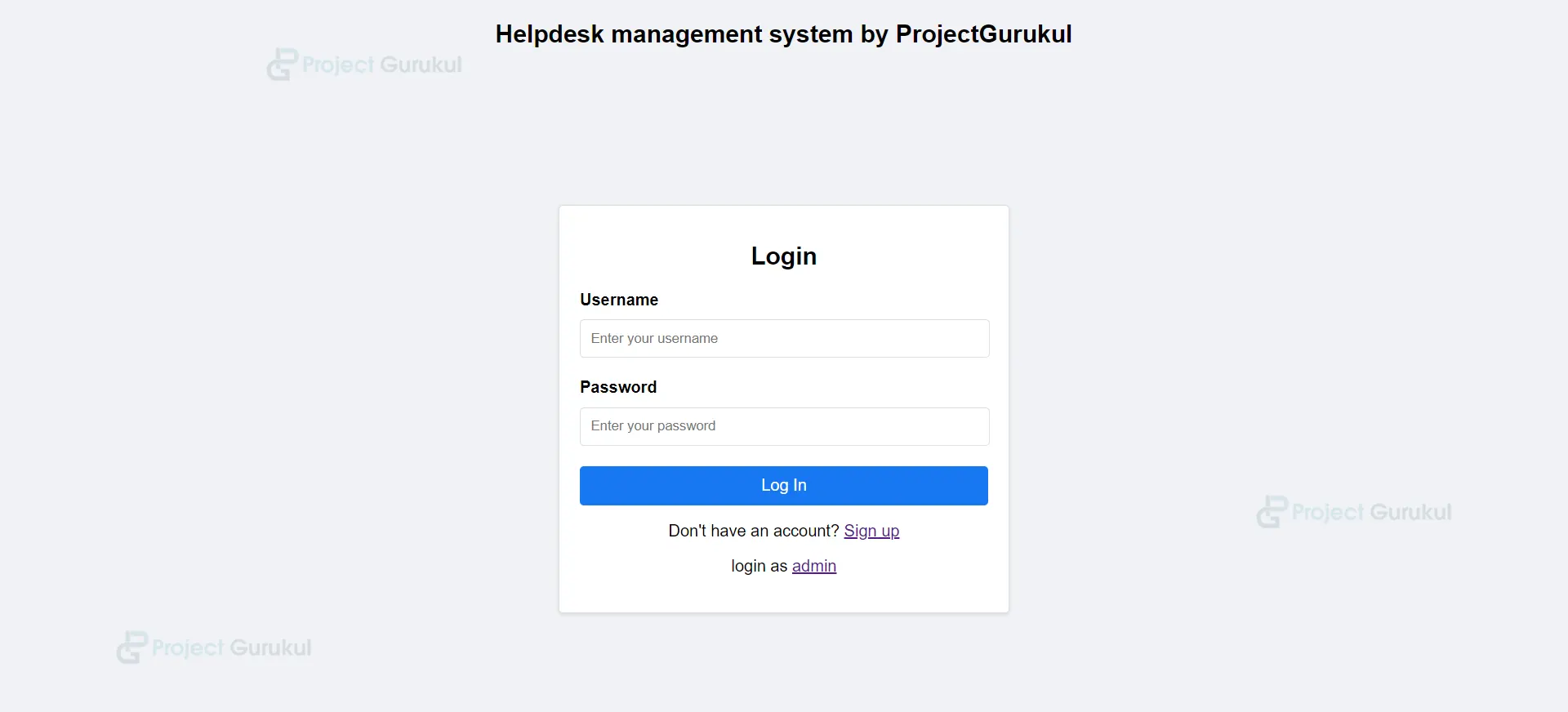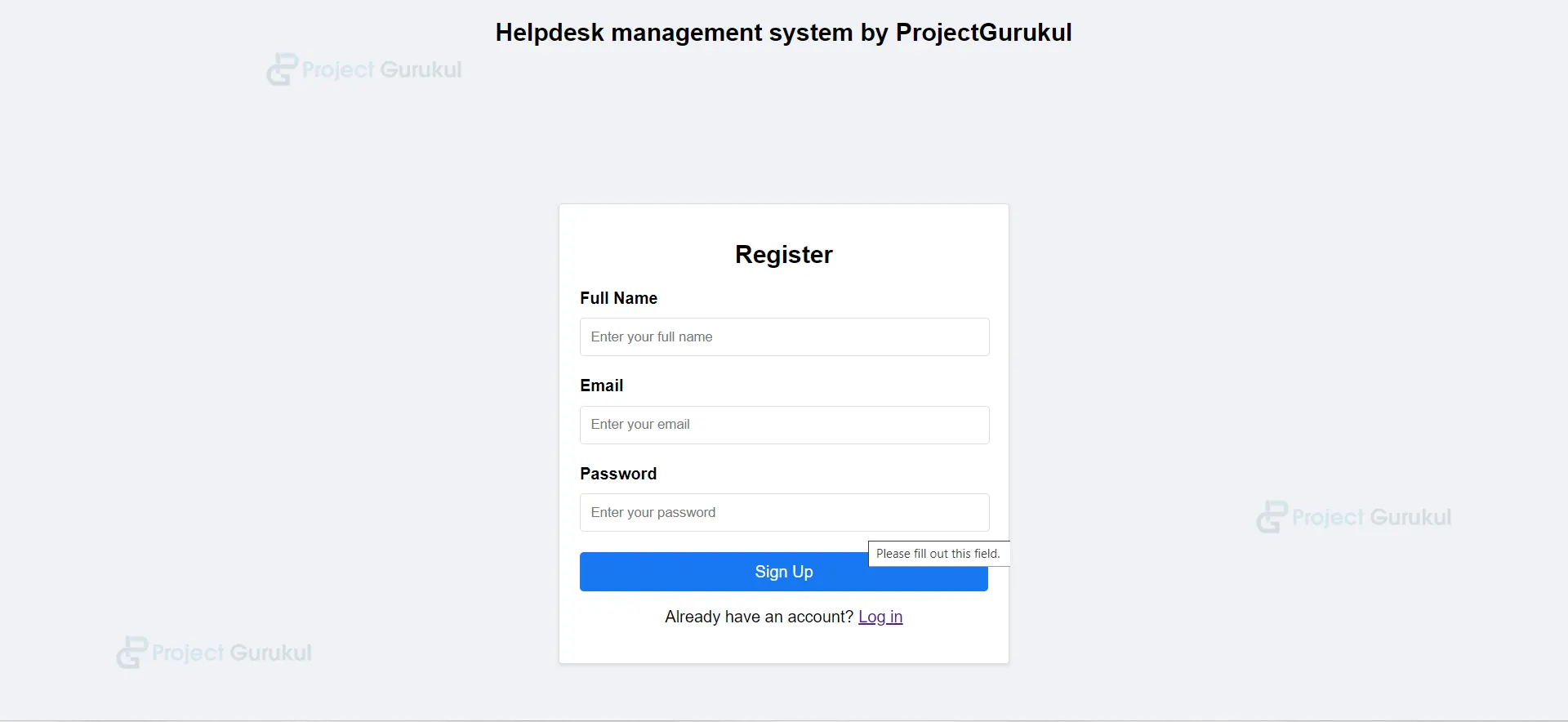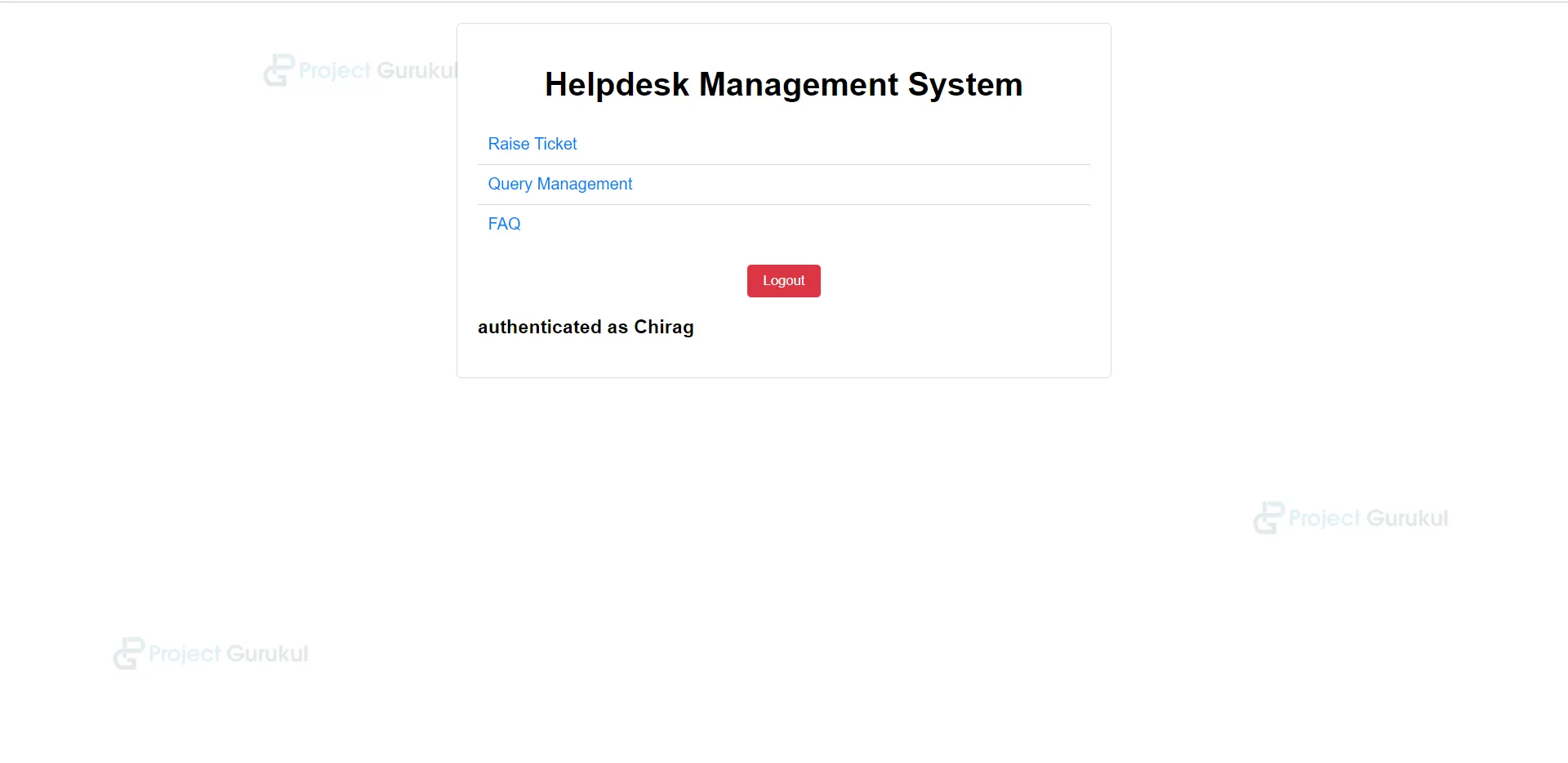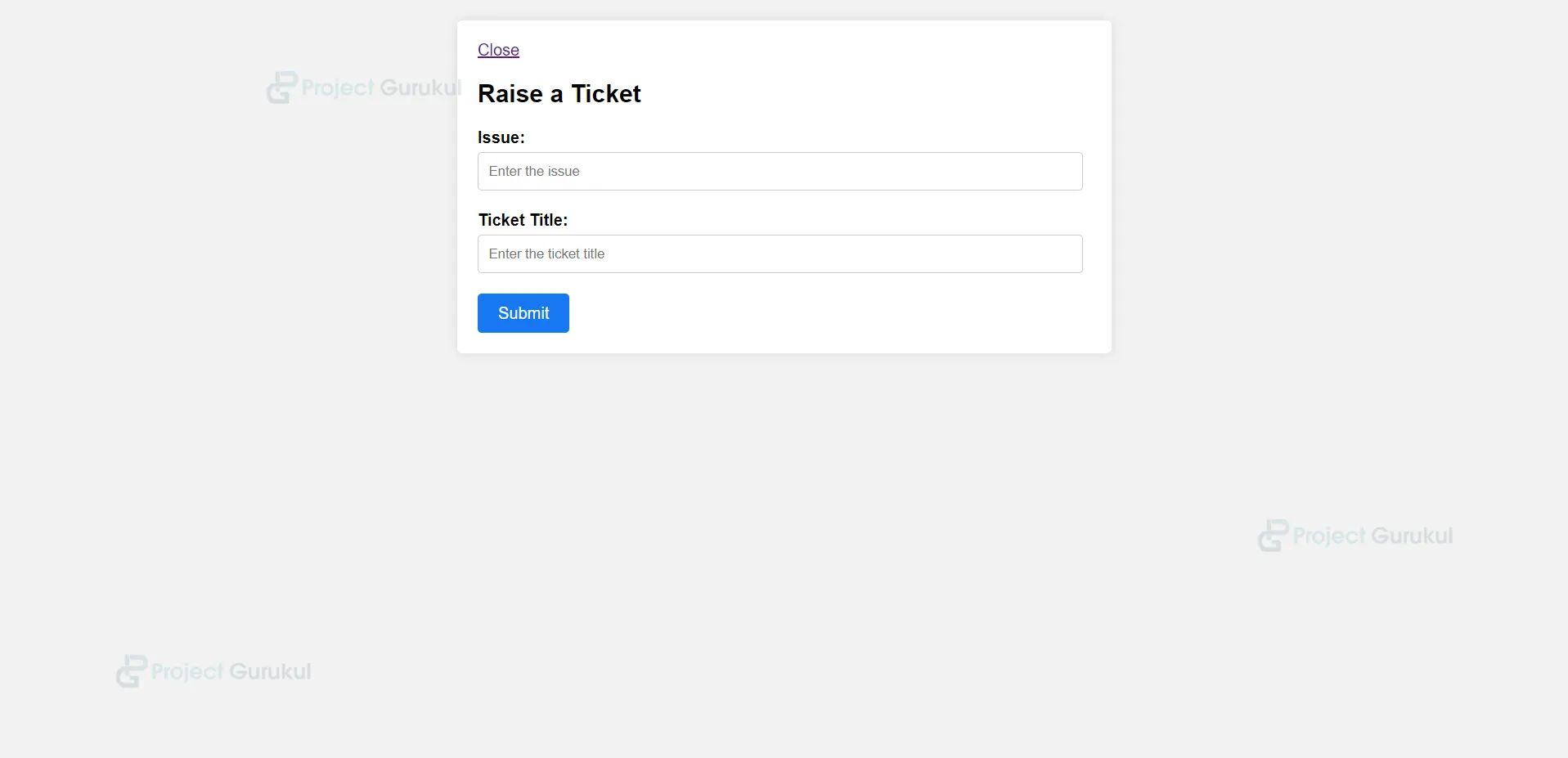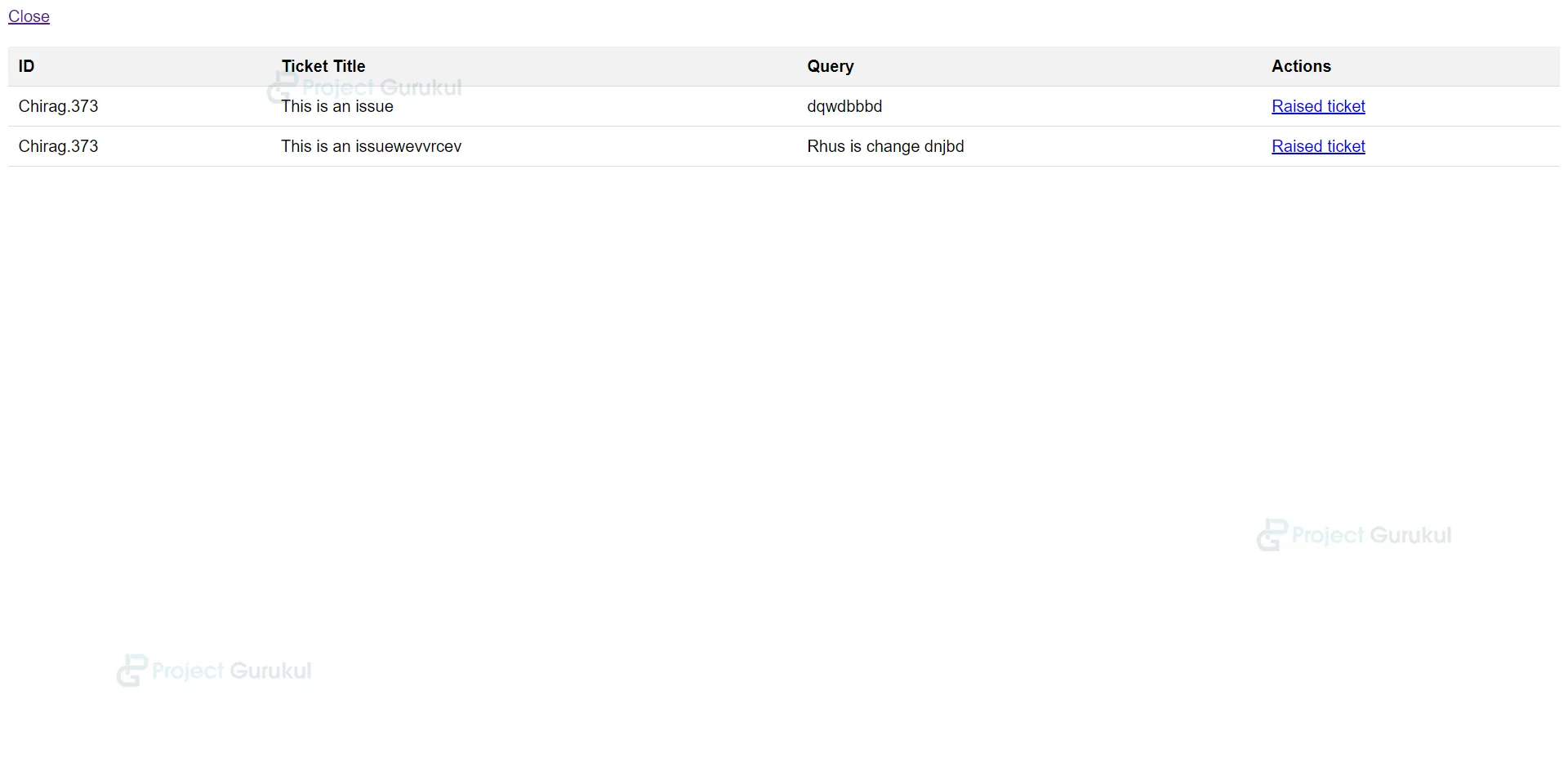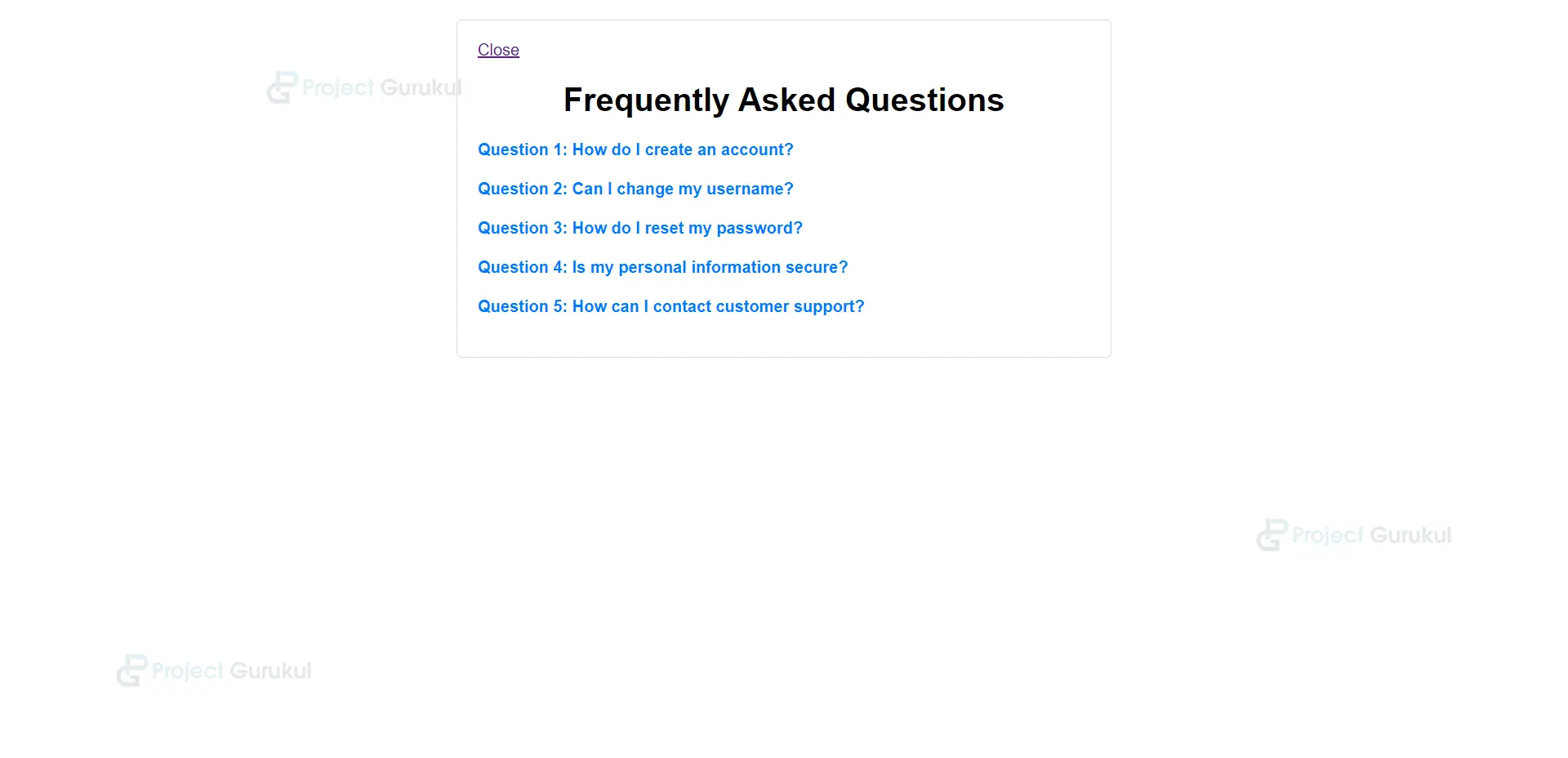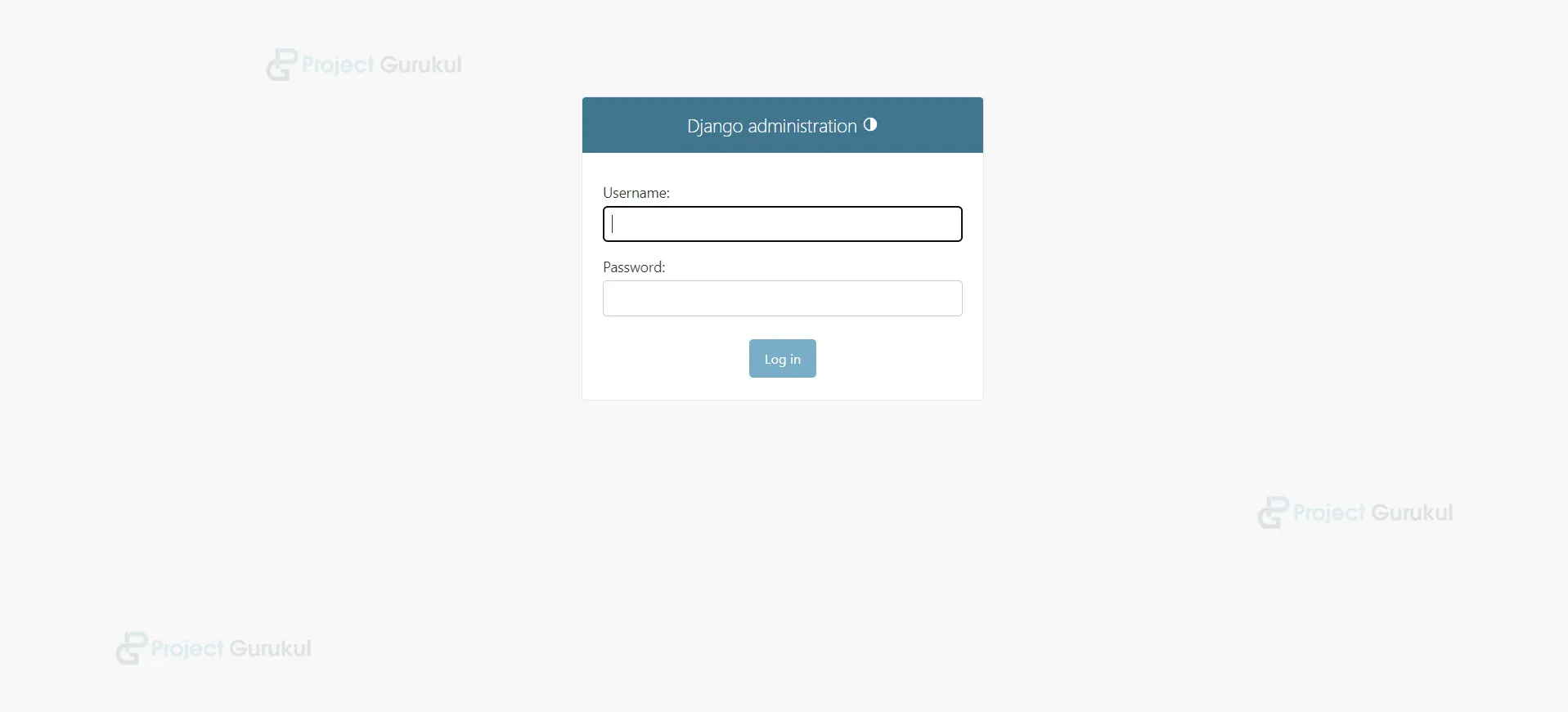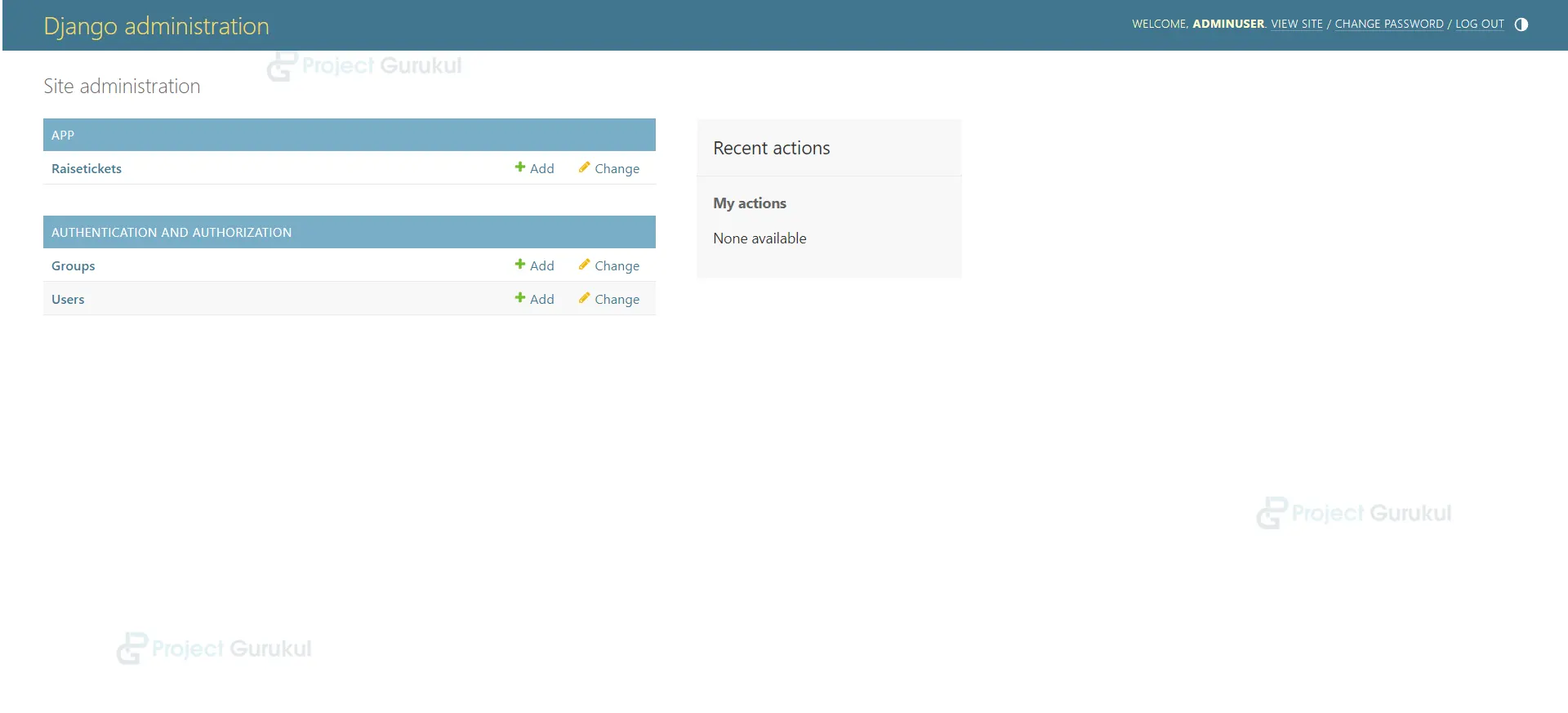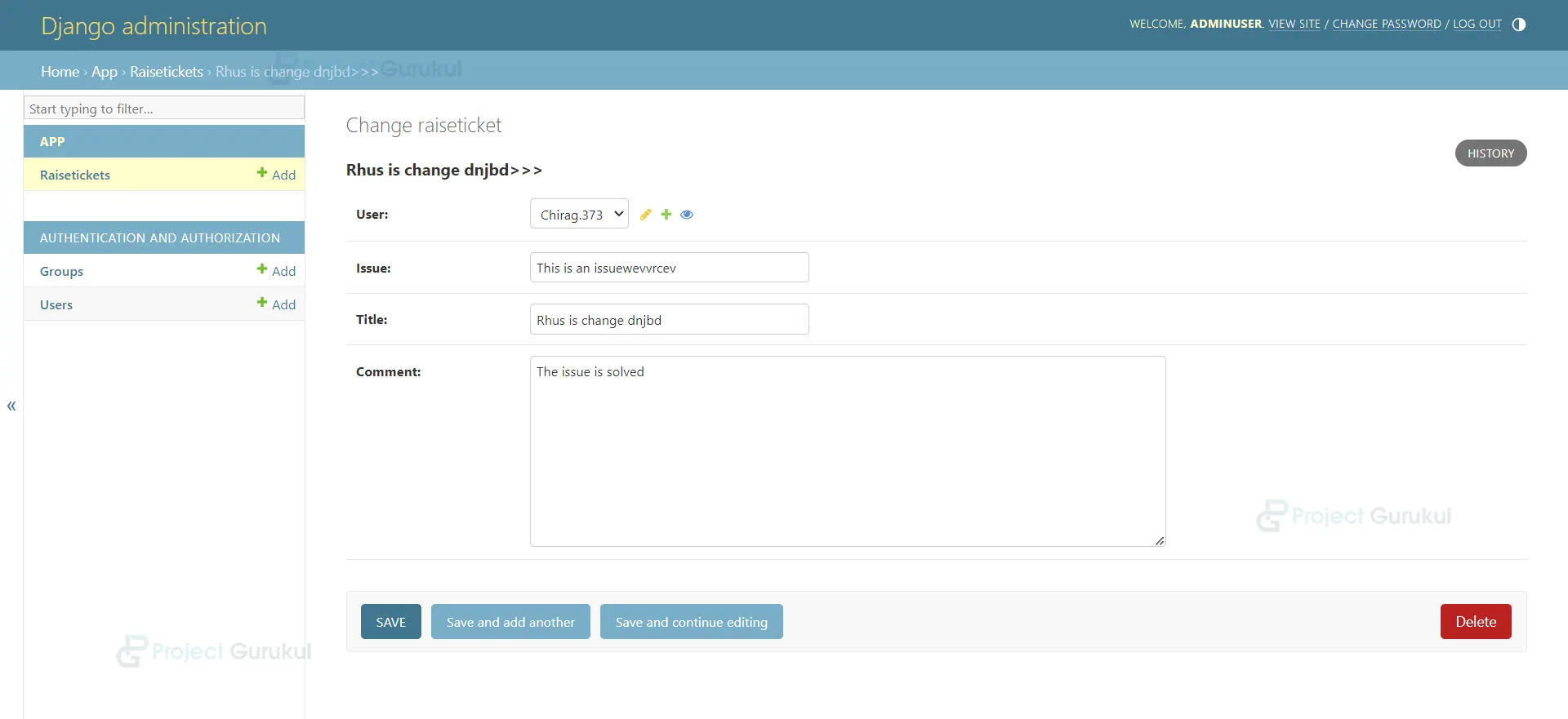Python Django Project – Helpdesk Management System
FREE Online Courses: Transform Your Career – Enroll for Free!
A Python Django Helpdesk Management System is a software tool or platform designed to streamline and optimize the process of managing customer support or IT helpdesk operations. It provides a centralized platform for capturing, tracking, and resolving customer or user issues, inquiries, and requests.
About Python Django Helpdesk Management System
A helpdesk management system (HMS) aims to streamline operations by efficiently managing tickets, automating workflows, and enhancing customer relationship management. It generates insights and reports for informed decision-making, increases operational efficiency, and facilitates integration with other systems for a more holistic view of customer support.
Prerequisite for Python Django Helpdesk Management System
- Proficiency in the Python programming language and a comprehensive grasp of the Django web framework are essential requirements.
- A strong understanding of HTML, CSS, and JavaScript is required to develop the project’s user interface.
- Relational Database: You will need to have a good understanding of relational databases, such as SQLite, MySQL, or PostgreSQL, to create and manage the database for the Online voting system project.
Download Python Django Helpdesk Management System Project
Please download the source code of the Python Django Helpdesk Management System Project: Python Django Helpdesk Management System Project Code.
Project Setup
Minimum system configuration:
- The operating system requirements include Windows 7 or later, macOS 10.11 or later, or a modern operating system.
- Linux distribution.
- Processor: Intel Core i3 or equivalent.
- RAM: 4 GB or more
- Disk Space: 5 GB or more.
- You have the flexibility to utilize browsers like Google Chrome, Mozilla Firefox, or Microsoft Edge for your browsing needs.
Visual Studio Code can be downloaded from the official website.
When accessing the download page, you have the option to choose the appropriate installer based on your operating system, be it Windows, macOS, or Linux. After downloading the installer, run it and proceed with the installation instructions to install VS Code on your computer.
Here’s a brief explanation of each step, along with the commands to execute:
1. To ensure Python is installed, please download and install the most recent version of Python from the official website. Follow the installation instructions provided for your specific operating system.
2. Install pip: Download the get-pip.py script and run python get-pip.py to install pip.
3. Create a virtual environment: Run python -m venv myenv to create a new virtual environment named ‘myenv’.
4. Activate the virtual environment: Run source myenv/bin/activate on Linux/Mac or myenv\Scripts\activate on Windows to activate the virtual environment.
5. Install Django: Run pip install django to install the latest stable version of Django.
6. Verify installation: Run python -m django –version to verify that Django is installed correctly.
7. Create a new Django project: Run Django-admin start project project to create a new Django project named ‘project’.
8. Start the development server: Run the python manage.py run server to start the development server.
That’s it! A working installation of Django should now be in place, and you should be ready to start building your web application.
Steps to create the “Helpdesk Management System” Project – Let’s Move ahead with this amazing project.
1. Open the terminal from the folder where we want to create the project. Right-click on mouse -> open in terminal -> write “code .” (space is mandatory between code and “.”)
2. Then go to the project folder -> urls.py and inside urls.py of project, do this ->add “include” in import as shown in the code below and add “path(“”,include(“app.urls”))”
3. Create urls.py in an app of Pin your Notes project(urls.py is mandatory in both project and app).
4. In setting.py, add the ‘app name”.
5. Now run the server to check whether everything is working or not. If you see the below image, then we are done with the installation part. To runserver, run command in terminal as follows “py manage.py runserver”.
6. Now, create the models.py using the ORM technique as follows.
To create the above field in the database, run the following commands as follows:
- Py manage.py makemigrations
- Py manage.py migrate
The file structure will look like this for our project:
App(main) -> Templates -> app(folder inside app) -> registration.html, login.html, votingpage.html.
Now, execute the project step by step with code as follows:
Steps to Create Helpdesk Management System Project – Let’s Move ahead with an amazing project:
1. Open the terminal from the folder where we want to create the project.
Right-click on mouse -> open in terminal -> write “code .” (space is mandatory between code and “.”)
2. Open the terminal from a folder where we want to create the project.
Right-click on mouse -> open in terminal -> write “code .” (space is mandatory between code and “.”)
3. Then go to the project folder -> urls.py and inside urls.py of project, do this -> add “include” in import as shown in the code below and add “path(“”, include(“app.urls”))”
4. Now create the models.py as per the application requirement
from django.db import models
from django.contrib.auth.models import User
# Create your models here.
class raiseticket(models.Model):
user = models.ForeignKey(User, on_delete=models.CASCADE)
issue = models.CharField(max_length=100)
title = models.CharField(max_length=100)
Explain the following code:
For registration:
Views.py
def register(request):
return render(request, "app/register.html")
def registration(request):
if request.method == "POST":
username = request.POST.get('username')
email = request.POST.get('email')
password = request.POST.get('password')
new_user = User.objects.create(
username=username,
email=email,
)
new_user.set_password(password)
new_user.save()
messages.success(request, "Registration successful! You can now log in.")
return redirect('loginpage')
return render(request, 'app/register.html')
templates/app -> register.html
<div class="container" style="margin-top: 10%;">
<h1>Register</h1>
<form method="post" action="{% url 'registration' %}">
{% csrf_token %}
<label for="fullname">Full Name</label>
<input type="text" id="username" placeholder="Enter your full name" name="username" required>
<label for="email">Email</label>
<input type="text" id="email" placeholder="Enter your email" name="email" required>
<label for="password">Password</label>
<input type="password" id="password" placeholder="Enter your password" name="password" required>
<input type="submit" value="Sign Up">
<p class="text-center">Already have an account? <a href="{% url 'loginpage' %}">Log in</a></p>
</form>
</div>
For login
Views.py
def loginpage(request):
return render(request, "app/login.html")
def login_view(request):
if request.method == 'POST':
username = request.POST.get('username')
password = request.POST.get('password')
user = authenticate(request, username=username, password=password)
if user is not None:
login(request, user)
return redirect('index')
elif request.user.is_authenticated:
return redirect("loginpage")
else:
messages.success(request, "error credentials")
return render(request, 'app/login.html')
else:
return render(request, 'app/login.html')
templates/app -> login.html
<div class="container" style="margin-top: 10%;">
<h1>Login</h1>
<form action="{% url 'login_view' %}" method="post">
{% csrf_token %}
<label for="email">Username</label>
<input type="text" id="username" placeholder="Enter your username" name="username" required>
<label for="password">Password</label>
<input type="password" id="password" placeholder="Enter your password" name="password" required>
<input type="submit" value="Log In">
<p class="text-center">Don't have an account? <a href="{% url 'register' %}">Sign up</a></p>
</form>
</div>
For raise ticket
Views.py
@login_required(login_url='loginpage')
def raise_ticket(request):
if request.method == 'POST':
issue = request.POST.get('issue')
title = request.POST.get('title')
user = request.user
new_query = raiseticket.objects.create(
issue=issue,
title=title,
user=user
)
return redirect("success")
else:
return render(request, 'app/raise_ticket.html')
templates/app -> raise_ticket.html
<div class="container">
<a href="{% url 'index' %}">Close</a>
<h2>Raise a Ticket</h2>
<form action="{% url 'raise_ticket' %}" method="post">
{% csrf_token %}
<div class="form-group">
<label for="issue">Issue:</label>
<input type="text" id="issue" name="issue" placeholder="Enter the issue" required>
</div>
<div class="form-group">
<label for="title">Ticket Title:</label>
<input type="text" id="title" name="title" placeholder="Enter the ticket title" required>
</div>
<button type="submit" class="submit-btn">Submit</button>
</form>
</div>
For showing data on who raise the ticket
Views.py
@login_required(login_url='loginpage')
def show(request):
show_data = raiseticket.objects.all()
return render(request, "app/show_user.html", {"show_data": show_data})
templates/app -> show_user.html
<a href="{% url 'index' %}">Close</a>
<table id="ticketTable">
<thead>
<tr>
<th>ID</th>
<th>Ticket Title</th>
<th>Query</th>
<th>Actions</th>
</tr>
</thead>
{% if show_data %}
{% for data in show_data %}
<tbody>
<tr>
<td>{{ data.user }}</td>
<td>{{ data.issue }}</td>
<td>{{ data.title }}</td>
<td>
<a href="{% url 'detailed' pk=data.pk %}">Raised ticket</a>
</td>
</tr>
</tbody>
{% endfor %}
{% endif %}
</table>
</div>
For detailed raised ticket page
Views.py
@login_required(login_url='loginpage')
def Detailed(request, pk):
new_data = get_object_or_404(raiseticket, pk=pk)
return render(request, "app/detailed.html", {"new_data": new_data})
templates/app -> detailed.html
<div class="container">
<h2>Raise Ticket</h2>
{% if new_data %}
<ul>
<li>Title:{{ new_data.title }}</li>
<li>Issue:{{ new_data.issue }}</li>
<li>raised by: {{ new_data.user }}</li>
</ul>
{% endif %}
</div>
For success page
templates/app -> success.html
<div class="container">
<h1>Success Message</h1>
<div class="success">
<div class="icon">✔</div>
<p>Your query was successfully added</p>
<a href="{% url 'show' %}"><button>OK</button></a>
</div>
</div>
For the signout page:
@login_required(login_url='loginpage')
def signout(request):
if request.user.is_authenticated:
logout(request)
return redirect("loginpage")
Urls.py for all above:
from django.urls import path, include
from .views import *
urlpatterns = [
path("index", index, name="index"),
path("register", register, name="register"),
path("", loginpage, name="loginpage"),
path("login_view", login_view, name="login_view"),
path("registration", registration, name="registration"),
path("raise_ticket", raise_ticket, name="raise_ticket"),
path("raised", Raised, name="raised"),
path("success", success, name="success"),
path("showuser", showuser, name="show_user"),
path("faq", faq, name="faq"),
path("show", show, name="show"),
path("detailed/<int:pk>", Detailed, name="detailed"),
path("logout", signout, name="logout")
]
Complete code of the Helpdesk Management System project:
Views.py
from django.shortcuts import render, redirect, get_object_or_404
from django.contrib.auth.models import User
from django.contrib import messages
from django.contrib.auth import authenticate, login, logout
from django.shortcuts import render, redirect
from django.contrib.auth.decorators import login_required
from .models import *
# Create your views here.
@login_required(login_url='loginpage')
def index(request):
return render(request, "app/home.html")
def register(request):
return render(request, "app/register.html")
def loginpage(request):
return render(request, "app/login.html")
@login_required(login_url='loginpage')
def Raised(request):
return render(request, "app/raise_ticket.html")
@login_required(login_url='loginpage')
def success(request):
return render(request, "app/success.html")
@login_required(login_url='loginpage')
def showuser(request):
return render(request, "app/show_user.html")
@login_required(login_url='loginpage')
def faq(request):
return render(request, "app/faq.html")
def registration(request):
if request.method == "POST":
username = request.POST.get('username')
email = request.POST.get('email')
password = request.POST.get('password')
new_user = User.objects.create(
username=username,
email=email,
)
new_user.set_password(password)
new_user.save()
messages.success(request, "Registration successful! You can now log in.")
return redirect('loginpage')
return render(request, 'app/register.html')
def login_view(request):
if request.method == 'POST':
username = request.POST.get('username')
password = request.POST.get('password')
user = authenticate(request, username=username, password=password)
if user is not None:
login(request, user)
return redirect('index')
elif request.user.is_authenticated:
return redirect("loginpage")
else:
messages.success(request, "error credentials")
return render(request, 'app/login.html')
else:
return render(request, 'app/login.html')
@login_required(login_url='loginpage')
def raise_ticket(request):
if request.method == 'POST':
issue = request.POST.get('issue')
title = request.POST.get('title')
user = request.user
new_query = raiseticket.objects.create(
issue=issue,
title=title,
user=user
)
return redirect("success")
else:
return render(request, 'app/raise_ticket.html')
@login_required(login_url='loginpage')
def show(request):
show_data = raiseticket.objects.all()
return render(request, "app/show_user.html", {"show_data": show_data})
@login_required(login_url='loginpage')
def Detailed(request, pk):
new_data = get_object_or_404(raiseticket, pk=pk)
return render(request, "app/detailed.html", {"new_data": new_data})
@login_required(login_url='loginpage')
def signout(request):
if request.user.is_authenticated:
logout(request)
return redirect("loginpage")
templates/app -> registration.html
<!DOCTYPE html>
<html>
<head>
<title>Registration Page</title>
<style>
body {
font-family: Arial, sans-serif;
background-color: #f0f2f5;
margin: 0;
padding: 0;
}
.container {
width: 400px;
margin: 0 auto;
padding: 20px;
background-color: #fff;
border: 1px solid #dddfe2;
border-radius: 4px;
box-shadow: 0 2px 4px rgba(0, 0, 0, 0.1);
}
h1 {
font-size: 24px;
text-align: center;
margin-bottom: 20px;
}
label {
font-weight: bold;
display: block;
margin-bottom: 10px;
}
input[type="text"],
input[type="password"] {
width: 95%;
padding: 10px;
border: 1px solid #dddfe2;
border-radius: 4px;
margin-bottom: 20px;
}
input[type="submit"] {
width: 100%;
padding: 10px;
background-color: #1877f2;
color: #fff;
border: none;
border-radius: 4px;
font-size: 16px;
cursor: pointer;
}
input[type="submit"]:hover {
background-color: #1565c0;
}
.text-center {
text-align: center;
}
</style>
</head>
<body>
<div class="container" style="margin-top: 10%;">
<h1>Register</h1>
<form method="post" action="{% url 'registration' %}">
{% csrf_token %}
<label for="fullname">Full Name</label>
<input type="text" id="username" placeholder="Enter your full name" name="username" required>
<label for="email">Email</label>
<input type="text" id="email" placeholder="Enter your email" name="email" required>
<label for="password">Password</label>
<input type="password" id="password" placeholder="Enter your password" name="password" required>
<input type="submit" value="Sign Up">
<p class="text-center">Already have an account? <a href="{% url 'loginpage' %}">Log in</a></p>
</form>
</div>
</body>
</html>
templates/app -> login.html
<!DOCTYPE html>
<html>
<head>
<title>Login Page</title>
<style>
body {
font-family: Arial, sans-serif;
background-color: #f0f2f5;
margin: 0;
padding: 0;
}
.container {
width: 400px;
margin: 0 auto;
padding: 20px;
background-color: #fff;
border: 1px solid #dddfe2;
border-radius: 4px;
box-shadow: 0 2px 4px rgba(0, 0, 0, 0.1);
}
h1 {
font-size: 24px;
text-align: center;
margin-bottom: 20px;
}
label {
font-weight: bold;
display: block;
margin-bottom: 10px;
}
input[type="text"],
input[type="password"] {
width: 95%;
padding: 10px;
border: 1px solid #dddfe2;
border-radius: 4px;
margin-bottom: 20px;
}
input[type="submit"] {
width: 100%;
padding: 10px;
background-color: #1877f2;
color: #fff;
border: none;
border-radius: 4px;
font-size: 16px;
cursor: pointer;
}
input[type="submit"]:hover {
background-color: #1565c0;
}
.text-center {
text-align: center;
}
</style>
</head>
<body>
<div class="container" style="margin-top: 10%;">
<h1>Login</h1>
<form action="{% url 'login_view' %}" method="post">
{% csrf_token %}
<label for="email">Username</label>
<input type="text" id="username" placeholder="Enter your username" name="username" required>
<label for="password">Password</label>
<input type="password" id="password" placeholder="Enter your password" name="password" required>
<input type="submit" value="Log In">
<p class="text-center">Don't have an account? <a href="{% url 'register' %}">Sign up</a></p>
</form>
</div>
</body>
</html>
templates/app -> home.html
<!DOCTYPE html>
<html>
<head>
<title>Homepage</title>
<style>
body {
font-family: Arial, sans-serif;
}
.container {
max-width: 600px;
margin: 20px auto;
padding: 20px;
border: 1px solid #ddd;
border-radius: 5px;
background-color: #fff;
}
h1 {
text-align: center;
}
ul {
list-style-type: none;
padding: 0;
margin: 20px 0;
}
li {
padding: 10px;
border-bottom: 1px solid #ddd;
}
li:last-child {
border-bottom: none;
}
li a {
text-decoration: none;
color: #007bff;
}
li a:hover {
text-decoration: underline;
}
.logout {
text-align: center;
margin-top: 20px;
}
.logout button {
padding: 8px 16px;
background-color: #dc3545;
color: #fff;
border: none;
border-radius: 4px;
cursor: pointer;
}
</style>
</head>
<body>
<div class="container">
<h1>Helpdesk Management System</h1>
<ul>
<li><a href="{% url 'raised' %}">Raise Ticket</a></li>
<li><a href="{% url 'show' %}">Query Management</a></li>
<li><a href="{% url 'faq' %}">FAQ</a></li>
</ul>
<div class="logout">
<a href="{% url 'logout' %}"><button>Logout</button></a>
</div>
{% if request.user.is_authenticated %}
<div>
<h3>authenticated as {{ request.user }}</h3>
</div>
{% endif %}
</div>
</body>
</html>
templates/app -> faq.html
<!DOCTYPE html>
<html>
<head>
<title>FAQ</title>
<style>
body {
font-family: Arial, sans-serif;
}
.container {
max-width: 600px;
margin: 20px auto;
padding: 20px;
border: 1px solid #ddd;
border-radius: 5px;
background-color: #fff;
}
h1 {
text-align: center;
}
.faq-item {
margin-bottom: 20px;
}
.question {
font-weight: bold;
color: #007bff;
cursor: pointer;
}
.answer {
margin-top: 10px;
display: none;
}
.answer p {
margin: 0;
}
</style>
<script>
function toggleAnswer(index) {
const answer = document.querySelector(`#answer${index}`);
answer.style.display = answer.style.display === 'none' ? 'block' : 'none';
}
</script>
</head>
<body>
<div class="container">
<a href="{% url 'index' %}">Close</a>
<h1>Frequently Asked Questions</h1>
<div class="faq-item">
<div class="question" onclick="toggleAnswer(1)">Question 1: How do I create an account?</div>
<div id="answer1" class="answer">
<p>Answer: To create an account, click on the "Sign Up" button and follow the registration process.</p>
</div>
</div>
<div class="faq-item">
<div class="question" onclick="toggleAnswer(2)">Question 2: Can I change my username?</div>
<div id="answer2" class="answer">
<p>Answer: Yes, you can change your username by going to the "Account Settings" and selecting the
"Change Username" option.</p>
</div>
</div>
<div class="faq-item">
<div class="question" onclick="toggleAnswer(3)">Question 3: How do I reset my password?</div>
<div id="answer3" class="answer">
<p>Answer: To reset your password, click on the "Forgot Password" link on the login page and follow the
instructions to reset it.</p>
</div>
</div>
<div class="faq-item">
<div class="question" onclick="toggleAnswer(4)">Question 4: Is my personal information secure?</div>
<div id="answer4" class="answer">
<p>Answer: Yes, we take the security of your personal information seriously and have implemented
measures to protect it.</p>
</div>
</div>
<div class="faq-item">
<div class="question" onclick="toggleAnswer(5)">Question 5: How can I contact customer support?</div>
<div id="answer5" class="answer">
<p>Answer: You can contact our customer support team by visiting the "Contact Us" page and filling out
the form.</p>
</div>
</div>
</div>
</body>
</html>
templates/app -> show_user.html
<!DOCTYPE html>
<html lang="en">
<head>
<meta charset="UTF-8">
<meta name="viewport" content="width=device-width, initial-scale=1.0">
<title>Document</title>
<style>
body {
font-family: Arial, sans-serif;
}
.container {
max-width: 600px;
margin: 20px auto;
padding: 20px;
border: 1px solid #ddd;
border-radius: 5px;
background-color: #fff;
}
h1 {
text-align: center;
}
table {
width: 100%;
border-collapse: collapse;
margin-top: 20px;
}
th,
td {
padding: 10px;
text-align: left;
border-bottom: 1px solid #ddd;
}
th {
background-color: #f2f2f2;
}
.form-group {
margin-bottom: 20px;
}
.form-group label {
display: block;
font-weight: bold;
margin-bottom: 5px;
}
.form-group input[type="text"] {
width: 100%;
padding: 10px;
border: 1px solid #ddd;
border-radius: 5px;
}
.btn-group {
text-align: right;
margin-top: 10px;
}
.btn {
display: inline-block;
padding: 8px 16px;
background-color: #4CAF50;
color: #fff;
border: none;
border-radius: 4px;
cursor: pointer;
}
.btn.update {
background-color: #007bff;
}
.btn.delete {
background-color: #dc3545;
}
</style>
</head>
<body>
<a href="{% url 'index' %}">Close</a>
<table id="ticketTable">
<thead>
<tr>
<th>ID</th>
<th>Ticket Title</th>
<th>Query</th>
<th>Actions</th>
</tr>
</thead>
{% if show_data %}
{% for data in show_data %}
<tbody>
<tr>
<td>{{ data.user }}</td>
<td>{{ data.issue }}</td>
<td>{{ data.title }}</td>
<td>
<a href="{% url 'detailed' pk=data.pk %}">Raised ticket</a>
</td>
</tr>
</tbody>
{% endfor %}
{% endif %}
</table>
</div>
</body>
</html>
templates/app -> success.html
<!DOCTYPE html>
<html>
<head>
<title>Success Message Template</title>
<style>
body {
font-family: Arial, sans-serif;
}
.container {
max-width: 400px;
margin: 20px auto;
padding: 20px;
border: 1px solid #ddd;
border-radius: 5px;
background-color: #fff;
}
h1 {
text-align: center;
}
.success {
text-align: center;
margin-top: 20px;
}
.success .icon {
font-size: 60px;
color: #4CAF50;
margin-bottom: 20px;
}
.success p {
font-size: 18px;
color: #333;
}
.success button {
padding: 8px 16px;
background-color: #4CAF50;
color: #fff;
border: none;
border-radius: 4px;
cursor: pointer;
}
</style>
</head>
<body>
<div class="container">
<h1>Success Message</h1>
<div class="success">
<div class="icon">✔</div>
<p>Your query was successfully added</p>
<a href="{% url 'show' %}"><button>OK</button></a>
</div>
</div>
</body>
</html>
templates/app -> detailed.html
<!DOCTYPE html>
<html lang="en">
<head>
<meta charset="UTF-8">
<meta name="viewport" content="width=device-width, initial-scale=1.0">
<title>Document</title>
</head>
<body>
<div class="container">
<h2>Raise Ticket</h2>
{% if new_data %}
<ul>
<li>Title:{{ new_data.title }}</li>
<li>Issue:{{ new_data.issue }}</li>
<li>raised by: {{ new_data.user }}</li>
</ul>
{% endif %}
</div><br><br><br>
</body>
</html>
Python Django Helpdesk Management System Output
Admin Panel:
1. We will use the Django admin panel for administration to reply to raised queries by users.
2. To set a special password, we will run the command ‘python manage.py createsuperuser’ in the terminal.
3. After successful registration, we can log in using the username and password provided during registration.
4. To view the model details in the admin panel, you need to register the model by importing it into the admin.py file and using the admin. site.register(RaiseTicket) method.
Summary
A Python Django helpdesk management system is a software tool used to efficiently track, manage, and resolve customer support requests. It streamlines communication, organizes ticketing systems, assigns tasks, and provides reporting and analytics, ultimately improving customer service and satisfaction.
